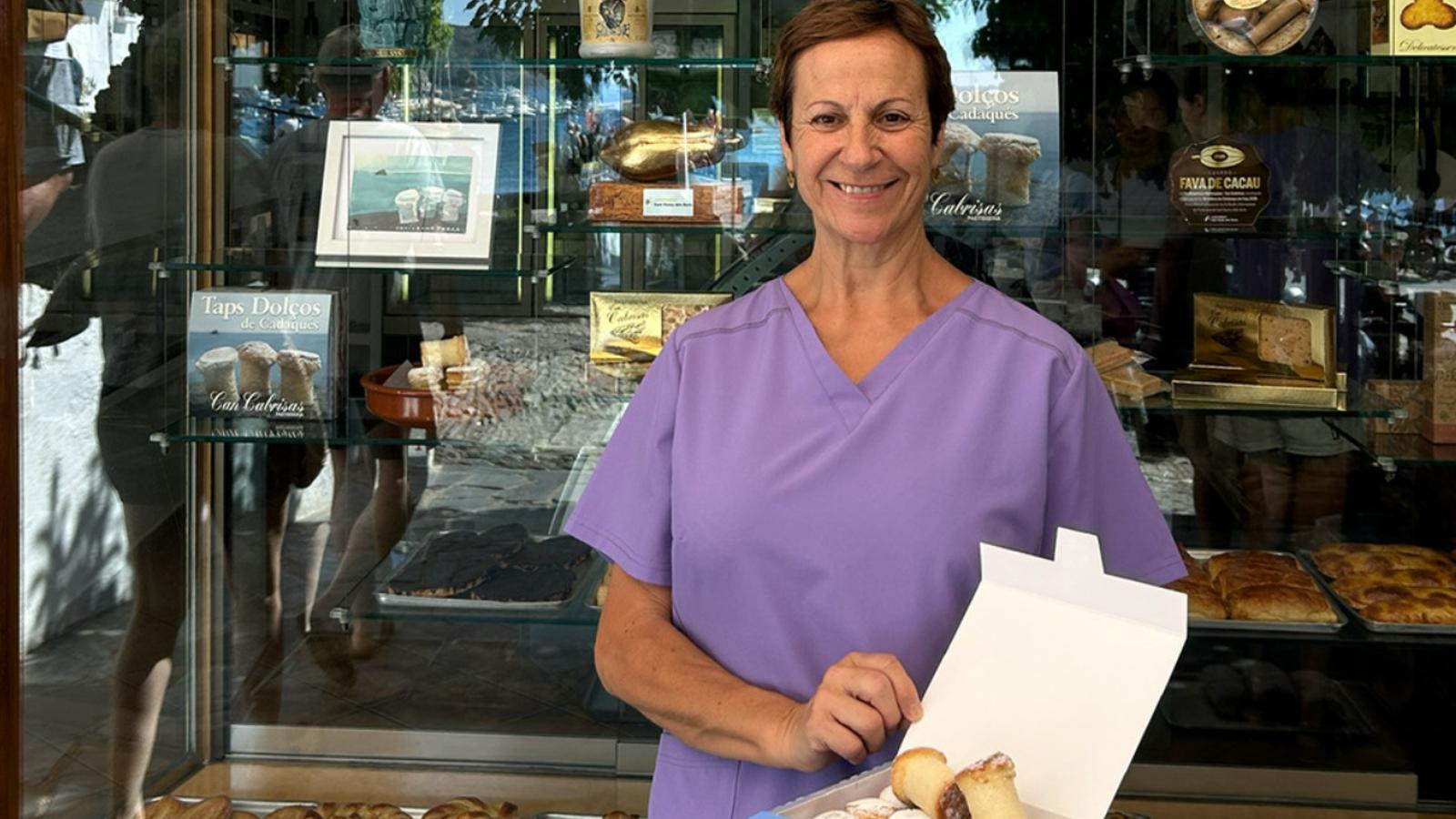The Cadaqués bakery that doesn't have time to make sponge cakes, lionesses, or carquinyolis
It is Can Cabrisas, opened in 1925, and currently has a new generation in the workshop


CadaquésIt's Wednesday, the Virgin of Carmen, and in Cadaqués everything is ready for the afternoon procession of the boats; there will also be mass and a sardine feast. And if there's a festival in Cadaqués, there's no shortage of corks. In fact, they're never missing any day of the year, but it's in the summer when Mercè Cabrisas, from the Can Cabrisas bakery, sells 4,000 a day. If you go mid-afternoon to buy them and haven't ordered them, you probably won't be able to try them. "But this happens as it happens, because yesterday, for example, there were some left," she says. Each one costs 0.90 euros, and in addition to selling them in bulk, it's also traditional to buy them in boxes of 15 (13 euros) and 30 (26 euros). The boxes have the unique profile of the Alt Empordà town drawn on them, and this very wrapping is also what has made the corks popular, identified with the town.
The stopper is a small biscuit, reminiscent of French rum baba, which At the Stohrer pastry shop in Paris (51 Rue Montorgueil) I was assured that they had invented it in the 18th century, a few years after the establishment opened in 1730.In Cadaqués, Mercè Cabrisas comments that they are similar in shape, but their taste is completely different, because the Cadaqués cork is not soaked in any liqueur. It was her great-grandfather, Sebastià Cabrisas, known to everyone as Nenton, who made the cork-shaped cake. It must have been around the 1930s or 1940s. "Some people told us that the cake was shaped like the stone that had been in front of the door, and that it was used to moor boats," says Mercè, who has old photos hanging on the walls of the pastry shop, showing what the establishment looked like. In one of the photos, you can see the stone that resembles the cork. The stone is no longer in front of Can Cabrisas, although some remain in Cadaqués, such as in front of the Meliton bar (Plaza del Passeig, s/n). "But no, Grandpa wasn't inspired by the stone used to tie boats, but rather he did some tests on the sponge cake, and he saw that it looked like a cork, and that's what he said," Mercè points out.
The corks, unnoticed
At first, this sweet went unnoticed. "I also made another sweet that I called marriage, which was a quince-filled sponge cake, soaked in cognac and coated in sugar," but the latter was not so lucky. In fact, the success of the Cadaqués cork from Can Cabrisas began one August about twenty years ago, when Mercè's father sold 500 every day. The neighbors, the City Council itself, helped us with the promotion," explains Mercè, who points out the thousand and one ways in which restaurants bring them to the table. "In Cadaqués, many bathe them in rum; I also like the way Jaume Subirós from Motel Empordà prepares them., who makes them with coffee cream, and does so in front of the customers' tables, who can watch how he takes all the steps."
These days in July, the corks made by one of Mercè's three sons, Sebastià Lladó, and a niece, Georgina Cabrisas, are well counted: a total of 4,000, and they are all sold. In spring, production drops to half. Making so many, and by hand, because the cork is laborious and artisanal, means that Can Cabrisas has stopped making many other pastries. "We don't make tea cakes, carquiñoles, sponge cakes, or lionesses," explains Mercè, who then details exactly how she defines the corks: it's a sponge cake coated with iced sugar and lemon essence. The texture is soft, and, in the mouth, it melts. Precisely because of this softness and because it melts with the bite, the Cadaqués cork is different from other similar creations, which are not as tender. And a note: Can Cabrisas also makes ensaimadas, croissants (good ones, with a little butter and vegetable margarine) and chocolate bonbons in the shape of hedgehogs (they call it that there). caves), mussels and fish.
Finally, Mercè Cabrisas, who has always worked in the shop while her two brothers were in the bakery (one of them, Sebastià, is now retired), comments that the corks she puts on sale every day starting at 10 a.m. are made that morning. "I like them to sell out every day, because then we can make new ones the next day; we don't keep them from one day to the next." Another story is what each customer does with the corks once they've bought them, because Mercè assures that some freeze them. "They do this especially when they buy them there in September, because they won't return to Cadaqués until the following year, and then they want to eat them for Christmas," she comments. Be that as it may, the fact that the Can Cabrisas bakery sells out the corks it makes every day is a guarantee of tenderness and freshness, believes Mercè. Probably one of the qualities that has made the cork become a symbol of the population's sweet tooth, which is enjoyed throughout the Girona region and beyond.
